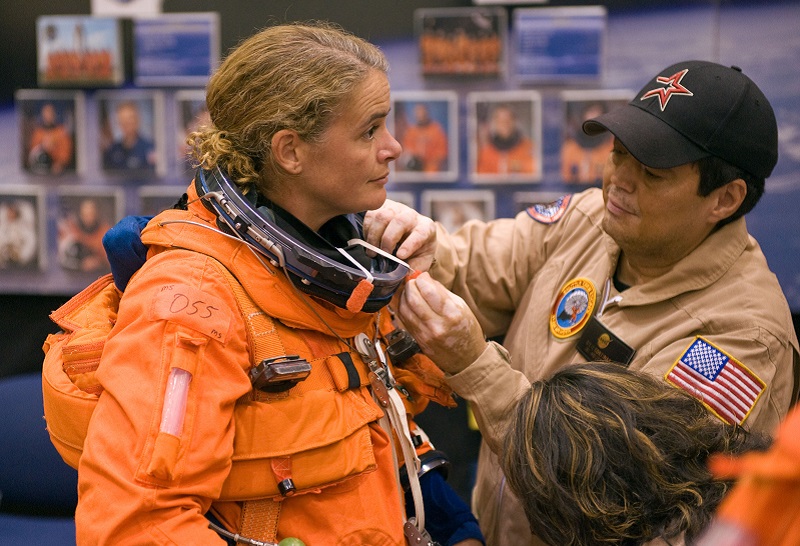
Astronaut Mission Specialist Julie Payette is fitted with a training version of a space shuttle launch and entry suit during a training session in 2008. Image credit: NASA
Want to be an astronaut? NASA is now accepting applications for its astronaut training program, with qualified applicants on track for candidate selection in mid-2017.
The next wave of astronauts will be involved with the commercial crew program, flying commercial spacecraft for crew and cargo on their journeys to and from the International Space Station. Ultimately, the American astronaut program aims to land humans on Mars.
“This next group of American space explorers will inspire the Mars generation to reach for new heights, and help us realize the goal of putting boot prints on the Red Planet,” said NASA Administrator Charles Bolden. “Those selected for this service will fly on U.S. made spacecraft from American soil, advance critical science and research aboard the International Space Station, and help push the boundaries of technology in the proving ground of deep space.”
Applications are available here and will be open from Dec. 14 through mid-February 2016. Applicants must have a Bachelor’s degree in a STEM field from an accredited university, three or more years of related professional experience, and the ability to pass a NASA astronaut physical. An advanced degree or military experience are desirable but not mandatory.
Two types of astronaut positions are open: Mission Specialist, for astronauts who work on systems, crew activity planning, consumables planning, and experiment/payload operations, and Astronaut Pilots, who will fly any of four different U.S. vessels and must in addition to the previous qualifications have at least 1,000 hours pilot-in-command time in a jet aircraft.
The transition to commercial spacecraft will allow for some of the upcoming changes in the astronaut program: the Boeing CST-100 Starliner and SpaceX Crew Dragon will allow for the addition of a seventh crew member to each ISS mission, doubling the amount of time astronauts will be able to spend doing research in space.
NASA’s Space Launch System and the Orion spacecraft, both in development, will extend astronauts’ range to lunar orbit in an effort to establish a framework for longer missions to Mars.
At present, NASA employs 47 astronauts.
Filed Under: Aerospace + defense




